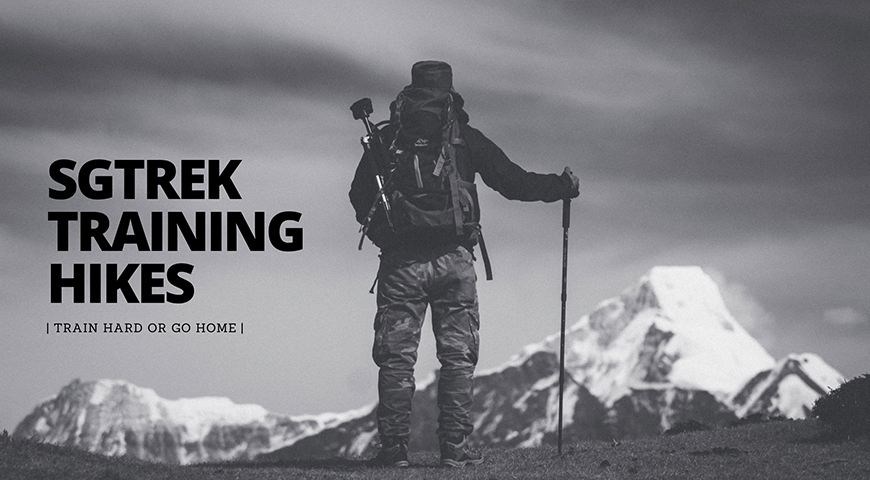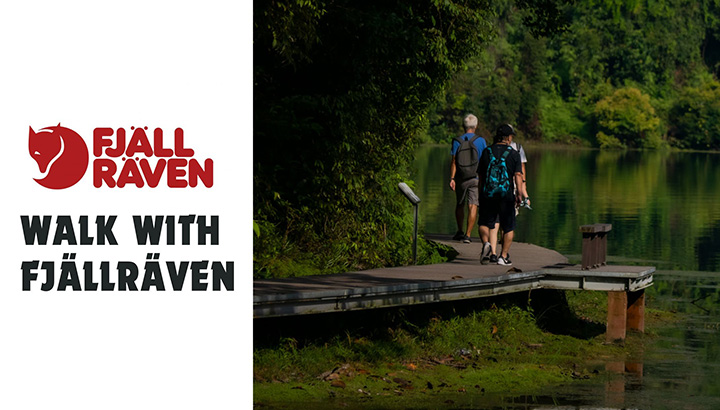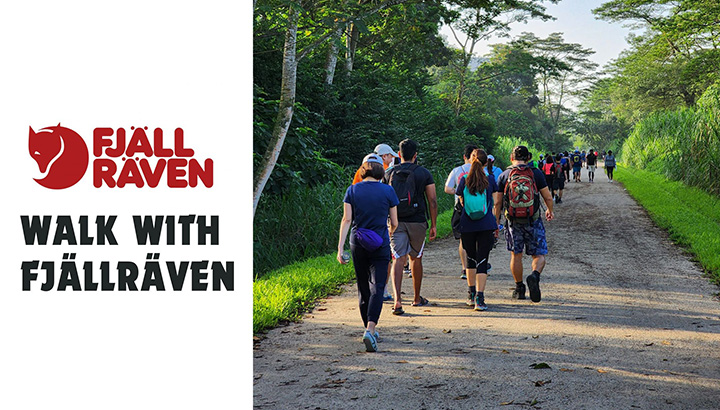
Bhutan, a Buddhist kingdom on the Himalayas’ eastern edge, is known for its monasteries, fortresses (or dzongs) and dramatic landscapes that range from subtropical plains to steep mountains and valleys. In the High Himalayas, peaks such as 7,326m Jomolhari are popular trekking destinations. Paro Taktsang monastery (also known as Tiger’s Nest) clings to cliffs above the forested Paro Valley.
EVENT DATE: 01-09May2020 (*only 4days leave needed)
EVENT COST: (*land cost only)
- 2-4Pax: SGD2580/Pax
- 5-8Pax: SGD2180/Pax
- 10Pax and Above: SGD1800/Pax
*single supplement SGD450/Pax additional. (*Subjective to flights and room availability)
Payment Terms:
- First Term: Deposit $2000 for booking confirmation (Flight tickets will be reserved)
- Second Term: Final payment before 29Feb2020
TRIP DETAILS:
DAY 1: ARRIVE PARO
WELCOME TO BHUTAN-LAND OF HAPPINESS
Arrive Paro by Drukair. After immigration and customs formalities, you will be received by the representative of our local tour company. Then you will be driven to your hotel in Paro. After checking into your hotel and refreshment you will visit Paro Rinpung Dzong (fortress), built in 1645 to defend the valley against Tibetan invaders. The Dzong is now being used as an administration center and school for monks. From the Dzong you will walk down to Rimpung Bridge (Traditional Cantilever Bridge), oldest bridge in Bhutan.
Then you will visit one of the clusters of farmhouses in Paro Valley and a visit to a farmhouse offers a good glimpse into the lifestyle of a farmer.
In the evening drive up the Paro valley to visit Drukgyel Dzong (in ruins), 18 km. from Paro town on the north side of the valley. It was built in 1649 to commemorate the victory of Bhutanese over allied Tibetan-Mongolian forces. The Dzong as a defense fortress is said to have housed the finest armory in the country.
Dinner & overnight at a hotel in Paro.
DAY 2: PARO-PUNAKHA/WANGDUE
PLACE TO VISIT-CHIMI LHAKHANG
Distance: 125 km & estimated driving time: 3 ½ hours
After breakfast, you will travel to Punakha & Wangdue which will take you through Chunzom (confluence of Pachu- the river flowing through Paro valley & Wangchu –the river flowing through Thimphu valley). On the way, visit Tachog Lhakhang (temple), this 14th century temple located on the base of a mountain across the Pa chu on the Paro-Thimphu highway, is a must visit temple in the Paro valley. Built by the great master architect Thangtong Gyalpo, the temple houses some unique statues. To get to the temple one may walk over the iron chains that spans over the Pa chu.
After crossing Chunzom, the drive will take you along the Wangchu upto Simtokha where road diversion leads you to Punakha/Wangdue through Dochula Pass (3,088m). In the clear spring sky, you can enjoy the panoramic view of the Himalayan Mountain ranges. At Dochula Pass you will see the beautiful 108 chortens (stupa) built on the hill by Ashi Dorji Wangmo Wangchuck (the Queen Mother of Bhutan) for the security and wellbeing of His Majesty, the King of Bhutan. You will also visit Druk Wangyal Lhakhang (temple). The temple was built to honor His Majesty Jigme Singye Wangchuck (the 4th King of Bhutan). The past and future appear to merge in the details of the temple that tells the story of a supreme warrior figure whose vision pierces the distant future.
After refreshment at Dochula Pass Resort you will continue your journey to Punakha. Punakha has been inextricably linked to some of the most momentous events in the Bhutanese history and deserves its reputation as one of the most beautiful and significant regions at the heart of Bhutanese culture. Punakha had served as the capital of Bhutan from 1637 till 1907 and the 1st National Assembly was held here. Punakha Dzong (fortress) is historically important and stands as the symbol for a unified Bhutan.
You will stop at Lobesa Village to visit the Devine Madman’s Monastery-Chhimi Lhakhang, famously known for its fertility shrine, where one can receive a special fertility blessing. After lunch at Lobesa Village you will visit the Punakha Dzong, located on the island of the Pho – Chu (male river) and the Mochu (female river). The dzong was built in 1637 by Zhabdrung Ngawang Namgyal (high Drupa Kagyu lama who unified the warring valley kingdoms under a single rule in 16th century) to serve as the religious and administrative seat of the region. It was here that the dual system of government was introduced in the 17th century and in 1907, enthroned the first King Gongsar Ugyen Wangchuck. Damaged over the centuries by four catastrophic fires and an earthquake, the dzong has been fully restored in the recent years by the 4th King Jigme Singye Wangchuck. At the dzong, you can see the highest standards in woodwork. Also visit the massive Kuenray, the Coronation Hall of all Bhutanese kings, the Dzongchung at the entrance to the dzong and the cantilever bridge over the Mochu that has been recently renovated.
Dinner & overnight at a hotel in Punakha.
DAY 3: PUNAKHA/WANGDUE-TRONGSA-BUMTHANG
SECOND OLDEST DZONG TO BE VISITED
Distance: 197 km, estimated travel time: 7 hrs.
After breakfast, travel to Bumthang through Trongsa. The drive will take you through dense forests of oak and blue pine trees and through the subtropical vegetation. The journey will also take you through the village of Nobding and Pele la pass (3300m). Throughout your trip you will come across the beautiful sceneries of rural Bhutan, with scattered settlements far from the road which makes for good photographing. You will also pass through open meadows, and valley of yak herders and several other villages via Chendebji Chorten (Stupa). Lunch and refreshments will be served enrooted. On arrival at Trongsa, you will visit National Museum which is housed in the Ta Dzong (watch tower). A museum in which aspects of Bhutanese culture and history are explained by beautifully objects. Documentary will be shown too which explains a great deal about Bhutanese history and history of monarchy.
After that you will continue your journey to Bumthang passing through Yotong La Pass (3400 m). Just before reaching Bumthang you will come across “Yathra” Weaving Centre at Zugney Village where you will see local weavers weaving Yathra. Yathra is the name for the colorful, hand-woven woolen cloth (often with geometric designs) that is produced in this region and wool used for this type of textile is sheep wool as the sheep is reared in this Bumthang Valley. Yathra is made into jackets or bags, etc.
Then you will be driven further to Bumthang Valley. On arrival at Bumthang, check into your hotel in Bumthang.
Dinner and overnight at a hotel in Bumthang.
DAY 4: BUMTHANG SIGHTSEEING
JAKAR DZONG – CASTLE OF WHITE BIRD.
After breakfast, visit the following:
- Jambay Lhakhang, built in the 7th century by the King Songtsen Goempo of Tibet. In his effort to propagate Buddhism he had a plan to build a total of 108 temples in Tibet and neighboring kingdoms.
- Kujey Lhakhang(Kujey means, “Body imprint”). The temple to the right is the oldest and was built by Minjur Tempa in 1652. It was built around the cave in which Guru Rimpoche meditated and left his body imprint.
- Jakar Dzong, “castle of the white bird”. According to legend, when the lamas assembled in about 1549 to select a site for a monastery, a big white bird rose suddenly in the air and settled on a spur of a hill. This was interpreted as an important omen, and the hill was chosen as the site for a monastery and for Jakar Dzong. The fortress is now used as an administrative center of the valley and summer residence of Trongsa monks.
- Tamshing Lhakhang:This temple is also known as Tamshing Lhendrup Chholing (Temple of the Good Message). In the evening stroll around the beautiful landscape of the Bumthang Jakar valley
After lunch drive to Mebar Tsho (Burning lake) and visit the lake and then drive back to your hotel and in the evening, you may wish to stroll around the beautiful landscaped gardens of Bumthang.
In the evening you may wish to stroll around the beautiful landscaped gardens of Bumthang.
Dinner & overnight at a hotel in Bumthang.
DAY 5: BUMTHANG-PUNAKHA/WANGDUE VIA PHOBJIKHA VALLEY
Distance: 208 km, estimated travel time: 8 hrs.
After breakfast, drive to Punakha via Phobjikha valley. Driving through the dense forests of the Phobjikha Valley you arrive at Gantey village where you see the Gangtey Monastery and visit the monastery. Phobjikha valley is part of the beautiful Jigme Singye Wangchuck National Park (formerly known as Black Mountains National Park), one of Bhutan’s most important nature sanctuaries. Each winter it is home to a flock of 300 rare and endangered black-necked cranes. The surrounding hills and mountains are home to nomadic shepherds and yak-herders. This is one of the most remote and untouched regions in Bhutan and is only just opening its doors to the outside world.
After lunch at Phobjikha valley and explore the valley and visit the Black Necked Crane Center.
Then drive onto Punakha/Wangdue.
Dinner & overnight at a hotel in Punakha/Wangdue.
DAY 6: PUNAKHA/WANGDUE-THIMPHU
NIGHT VIEW OF TASHICHHOE DZONG
Distance: 71 km & estimated driving time: 2 ½ hours
After breakfast you will be driven to Thimphu and After lunch visit the following
- Centenary Farmers’ Market(open from Thu-Sun only): Most of the Thimphu’s population and many valley dwellers converge on the bustling weekend market, held by the side of Wangchu River. A wide range of foodstuffs and local arts and crafts are sold at the market, which runs from Friday afternoon till Sunday evening. A visit to the market provides great photo opportunities, as well as the chance to mingle with local people.
- Takin Preserve, which houses the national animal the Takin that is only found in Bhutan. This is an extremely rare member of the goat family. Found in herds in the very high altitudes (13,125ft and over). They live on a diet of grass and bamboo. It can weigh as much as 550 pounds.
- WatchArchery match (Bhutan’s national game)
- Tashichhoe Dzong, a fortress of the glorious religion. It was built in 1641 by Zhabdrung Ngawang Namgyel and was reconstructed into present structure by the late King, His majesty Jigme Dorji Wangchuck in the year 1962-1969. It houses the secretariat building, the throne room and the office of the king, and the central monk body.
- The National Memorial Chorten(stupa) which was constructed in 1974 as a memorial for the third King of Bhutan, King Jigme Dorji Wangchuck, who is widely regarded as the father of modern Bhutan. The term ‘chorten’ literally means ‘ seat of faith’ and Buddhists often call such monuments the ‘Mind of Buddha’. Meet the elderly generation in circumambulation, especially in the evenings, at the National Memorial Chorten.
Craft Bazaar where craftsmen and artisans from across the country display and sell their handicrafts.
Dinner & overnight at a hotel in Thimphu.
DAY 7: THIMPHU SIGHTSEEING & SHORT HIKE TO TANGO MONASTERY
BHUDDIST PRAYER FLAG HOSTED AT BRIDGE
After breakfast visit the following:
- Traditional Bhutanese paper making factory. The handmade paper making in Bhutan stemmed from the age-old tradition originated in 8th century of Bhutanese history. The handmade paper constitutes as valuable National heritage of Bhutanese cultural identity and is preserved through all the ages. The Traditional paper is recognized and held high esteem both in home and outside world. Jungshi Paper Factory was established in November 1990 as an undertaking of the Royal Government of Bhutan. The unit now boasts as a major and sole dealer in handmade paper and its products.
- Kuenselphodrangwhere the Bhutan’s largest Buddha statue is perched on the hillock overlooking the entire Thimphu valley below and the view from there is magnificent. Craft Bazaar where craftsmen and artisans from across the country display and sell their handicrafts.
- National Institute of Traditional Medicine, where medicinal herbs are compounded and dispensed, and traditional medical practitioners trained.
- School of Traditional Painting of Arts and Craftswhere students undertake a six-year course on the 13 traditional arts and crafts of Bhutan.
After lunch drive for about 30 minutes to the base camp of Tango Monastery and hike up to the Monastery. The walk up to the Monastery is through the forest filled with Rhododendron flower trees which will be in full bloom during April month. Tango Monastery is the center for higher studies for monks. The view from Tango Monastery is breathtakingly beautiful. You will experience complete peace and serenity in this area. After visiting the monastery, walk back to the road and then drive back to Thimphu.
Dinner & overnight at a hotel in Thimphu.
DAY 8: THIMPHU-PARO (54 KM,1 HR) & A DAY HIKE TO TAKTSANG GHOEMPA (TIGER’S NEST MONASTERY)
After breakfast, drive to Paro which takes about 1 hr. and then hike up to Taktsang Monastery, also known as ‘Tiger’s Nest’. The walk up to the viewpoint will take about 1 – 1 ½ hrs depending on your fitness and from Viewpoint you will enjoy a spectacular view of the monastery clinging to the side of the cliff. Stop for refreshment at the Viewpoint Cafeteria. Then walk further up to the monastery which will take about 1 hour. It is said that in the 8th century Guru Rinpoche flew on the back of a tigress from eastern Bhutan to this place and meditated in a cave here for 3 months. The principal Lhakhang (monastery) of the present monastic complex dates from 1692. Taktsang was damaged severely by fire in 1998 but has now been fully restored to its former glory. After visiting the monastery, walk downhill back to the road on the way stop for lunch at the viewpoint cafeteria and then walk further downhill to the road point. Then drive back to hotel. On the way visit Kyichu temple, one of the 108 temples built in the 7th century by the Tibetan King Songsten Gampo. The story goes that a giant demon lay across the whole area of Tibet and the Himalayas and was preventing the spread of Buddhism. To overcome her, King Songtsen Gampo decided to build 108 temples, which would be placed on all the points of her body.
In the evening you can relax in the Traditional Bhutanese Hot stone bath.
Dinner & overnight at a hotel in Paro.
DAY 9: PARO DEPARTURE
In the morning after breakfasting your tour guide will escort you to the Paro airport for your flight to your destination further.
THANK YOU – HAVE A SAFE FLIGHT
Price Includes:
- Accommodation under twin sharing basis
- All 3 meals
- Experienced English-Speaking Tour Guide licensed by Tourism Council of Bhutan.
- Private transport within Bhutan (Toyota coach / Tucson / Santafe / Eco Sport) as per itinerary.
- Museum & Monuments entrance fee.
- Bottled water during the tour.
- Government Royalty of USD 65 per person per night
- Tourism development fund of USD 10 per person
- Visa Fee of USD 40 per person
- Government surcharge USD 40 per person / night for single traveler and USD 30 per person / night for 2 pax.
Service not included in the above-mentioned costs
- Air ticket (flight fare)
- Personal Expenses
- Travel Insurance.
- Gratuities, bar bills, telephone bills, personal expenses, and laundry.
- Single room supplement.
- Personal Medication.
- Food and drinks other than specified in the itinerary.
3 Star Hotel We Provide:
Thimphu: Hotel Migmar or similar
Paro: Tenzinling Resort or similar
Punakha: Hotel Lobesa or similar
Phobjikha: Hotel Dewachen or similar
Bumthang: Hotel Peling or similar
Trongsa: Hotel Yangkil or similar
FLIGHT DETAILS: Cost Approx. SGD1300 + taxes (*will be advised during booking)
01 May 2020 FRI: 0430 – 0700 DRUK AIR 541 – Direct Flight
09 May 2020 SAT: 1120 – 1920 DRUK AIR 540 – 01 Stop in Guwahati. NO need to plane change.
By Joining this trip YOU :
- Acknowledge all the TERMS & CONDITIONS : https://sgtrek.com/terms-conditions/
- Acknowledge that YOU have read and agreed to RELEASE OF LIABILITY, WAIVER OF CLAIMS, EXPRESS ASSUMPTION OF RISK AND INDEMNITY AGREEMENT FORM of (SGTREK) : https://sgtrek.com/sgtrek-indemnity-form/
- YOU have read all the above paragraphs and YOU know, understand, and appreciate these and other risks that are inherent in The Activity. YOU hereby assert that your participation is voluntary and that YOU knowingly assume all such risks.YOU acknowledge the agreement freely and voluntarily, and intend by completing this form and unconditional release of all liability to SGTREK PTE. LTD.
TERMS & CONDITIONS: http://www.sgtrek.com/terms-conditions/
For any queries related to the event do contact below person:
Phone: +65 92700908 (WhatsApp)
Email : contact@sgtrek.com
This trip is organized by:
SGTREK PTE. LTD.
Reg. No. 201816267K
STB License No. 03160
Address: 28A, Kandahar Street
Singapore 198889
Email: contact@sgtrek.com
WhatsApp: +6592700908
Website: https://sgtrek.com









